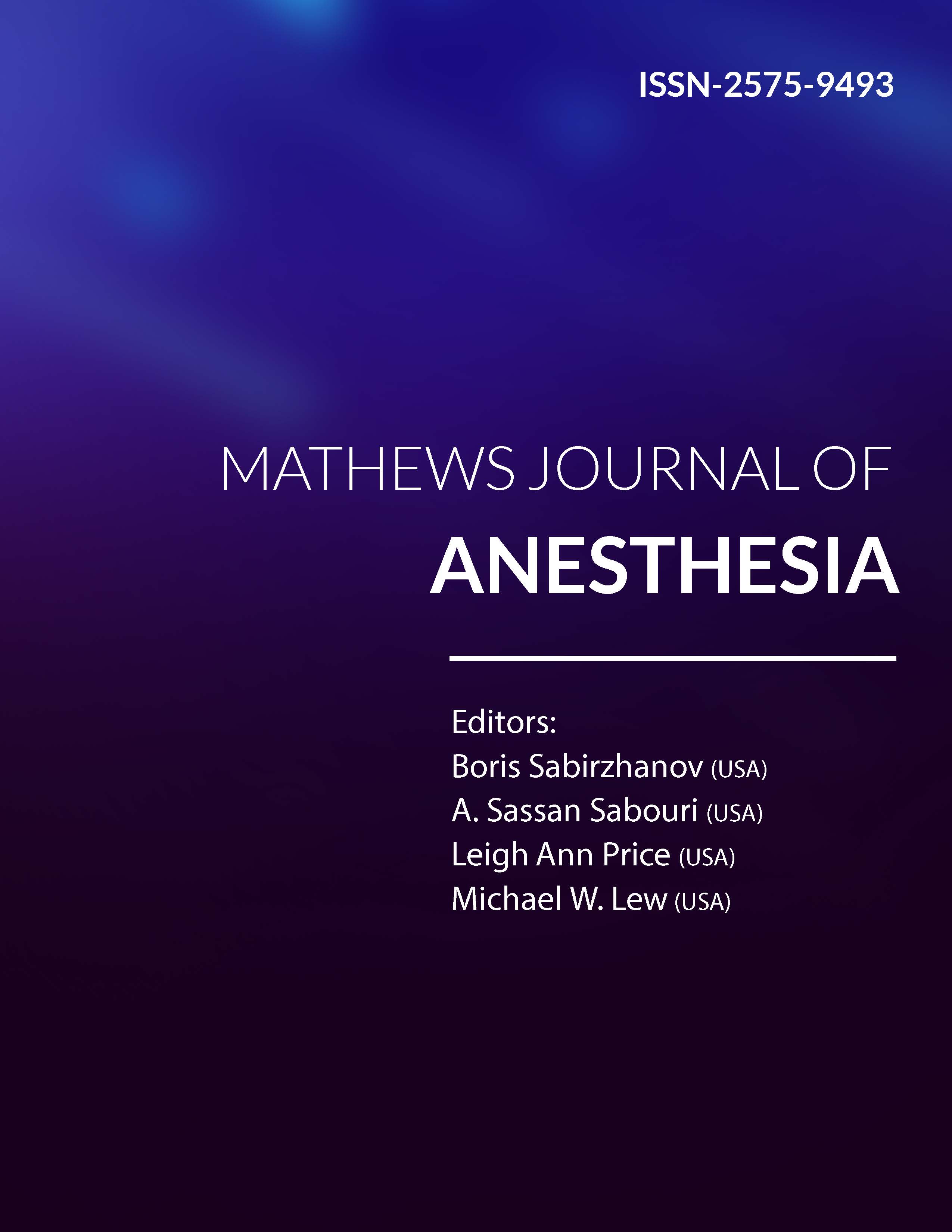
Information Links
Previous Issues Volume 1, Issue 2 - 2017
Hemodynamic Response to Orotracheal Intubation: Bronchofibroscopy VS. Direct Laryngoscopy
Negrini D1*,Oliveira R2,Bethlem ED3
1Anesthesiology Service of the Gaffrée and Guinle University Hospital of the Federal University of the State of Rio de Janeiro (Universidade Federal do Estado de Rio de Janeiro).
2Discipline of Neuropsychiatry of the Federal University of the State of Rio de Janeiro.
3Cardiopulmonary Discipline of the Federal University of the State of Rio de Janeiro.
Corresponding Author: Negrini D, Anesthesiology Service of the Gaffrée and Guinle University Hospital of the Federal University of the State of Rio de Janeiro (Universidade Federal do Estado de Rio de Janeiro), Tel: +552123340639; E-Mail: [email protected]
Received Date: 28 Feb 2017
Accepted Date: 20 Apr 2017
Published Date: 21 Apr 2017
Copyright © 2016 Negrini D
Citation: Negrini D, Oliveira R and Bethlem ED. (2017). Hemodynamic Response to Orotracheal Intubation: Bronchofibroscopy VS. Direct Laryngoscopy. Mathews J Anesth. 1(2): 005.
ABSTRACT
Bronchofibroscopy is widely used in the context of orotracheal intubation in difficult airways. The cost of the equipment and the larger learning curve required compared to direct laryngoscopy increases its difficulty of use. Bronchofibroscopy may be less traumatic than direct laryngoscopy, triggering a lower hemodynamic response. Thus, we evaluated the behavior of heart rate and mean blood pressure in the process of orotracheal intubation by direct laryngoscopy and bronchofibroscopy in any airway scenario. Two groups of patients underwent orotracheal intubation by direct laryngoscopy (N = 32), group L, and bronchofibroscopy (N = 31), group B. These patients receiving elective surgeries at Gaffée and Guinle University Hospital (Hospital Universitário Gaffrée e Guinle – HUGG) were aged 18 years or older and did not have a full stomach. The predictors of difficult airways were evaluated during the pre-anesthetic evaluation, and the procedures were performed by the same anesthesiologist for both groups. All cases were performed under general anesthesia. Group L presented a rise in heart rate and mean blood pressure at the end of the procedure (p < 0.05), alterations not observed in group B. The duration of the procedure was higher in group B (p < 0.05). There was no intubation failure in any of the study patients. The absence of elevation in the parameters of heart rate and mean blood pressure in patients submitted to bronchofibroscopy orotracheal intubation compared to those intubated by direct laryngoscopy may be related to a lower nociceptive response and might lead to a broader indication of bronchofibroscopy in select clinical settings, regardless of the degree of airway difficulty.